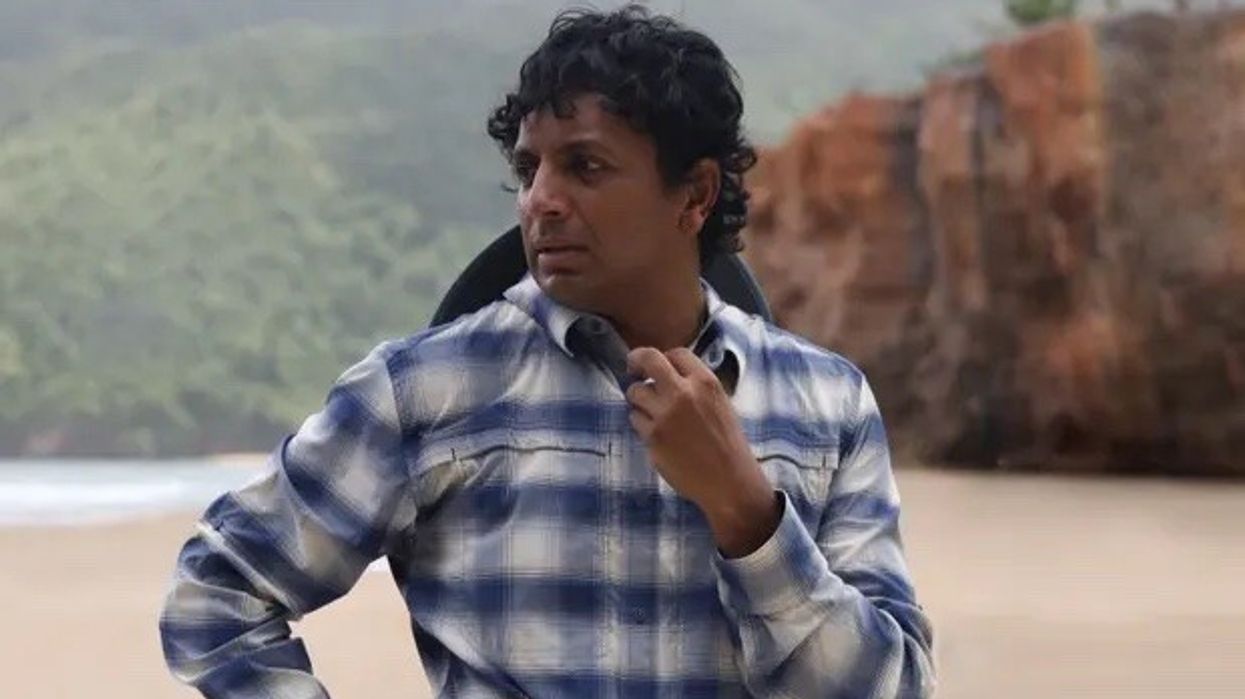10 Directing Lessons Inspired by M. Night Shyamalan
Get twisty and turny with some lessons inspired by one of the modern greats.

As a suburban Philadelphia kid, there will always be a soft spot in my heart for any M. Night Shyamalan film. The guy can flat out direct, and always brings something visually interesting to his movies.
From The Sixth Sense to Split, his work has inspired many aspiring directors.
Here are 10 directing lessons drawn from Shyamalan's career that can guide and inspire your own creative endeavors.
10 Directing Lessons Inspired by M. Night Shyamalan
1. Crafting Suspense Through Misdirection
Shyamalan excels at leading audiences through a maze of suspense, guiding their expectations only to challenge them with masterful misdirection. This approach not only sustains engagement but enhances the narrative payoff, making the journey to the climax as compelling as the reveal itself.
- Example: The Sixth Sense uses misdirection to build suspense around a boy who communicates with spirits, culminating in a twist that reframes the entire narrative, showcasing the power of narrative surprises.
2. The Art of the Plot Twist
Shyamalan has become synonymous with the plot twist, demonstrating that when executed effectively, it can profoundly impact the narrative, offering new insights and redefining the story's trajectory.
- Example: Unbreakable unfolds the tale of an ordinary man discovering his superhuman abilities, with a twist that recontextualizes the narrative, illustrating the potential of plot twists to add depth and complexity.
3. Character Depth Over Spectacle
In Shyamalan's cinema, characters drive the narrative. Their depth and complexity ensure that the audience's investment goes beyond the surface-level spectacle, anchoring the story in emotional realism.
- Example: Split delves into the psyche of Kevin, who has dissociative identity disorder, prioritizing character development over the potential for spectacle, thus emphasizing the human element of storytelling.
4. Atmospheric Tension
Atmosphere in Shyamalan's films is a living entity, meticulously crafted through setting, sound, and visual cues to build tension and mood, proving that atmosphere can be as influential as any character in shaping the narrative's tone.
- Example: The Village creates a palpable sense of unease through its isolated setting and careful design, using atmosphere to amplify the story's suspense and thematic undertones.
5. Minimalism in Storytelling
Shyamalan's narratives often focus on a singular, compelling concept explored in depth, demonstrating that a minimalist approach can yield a more intense and focused narrative impact.
- Example: Signs centers on a family facing an alien invasion, using minimalism to explore themes of faith and redemption on a personal scale, proving that less can indeed be more.
6. Innovative Use of Camera
The director's innovative camera work—through long takes, unusual angles, and intentional framing—serves as a narrative tool in itself, enhancing storytelling by visually conveying emotions, themes, and tension.
- Example: The distinctive visual style of The Sixth Sense and Unbreakable, characterized by unique camera movements, enriches the narrative and draws viewers deeper into the story.
7. Integrating Themes Into the Narrative
Shyamalan weaves complex themes into the fabric of his stories, ensuring they resonate throughout the narrative. This integration elevates the film beyond mere entertainment, inviting audiences to reflect and engage on a deeper level.
- Example: Lady in the Water embeds themes of faith, redemption, and the power of storytelling into its structure, showing how thematic depth can enrich the narrative.
8. Effective Use of Silence
Strategic use of silence can amplify tension, focus attention, and enhance emotional resonance. Shyamalan's disciplined application of silence demonstrates its power to strengthen narrative impact without a word being spoken.
- Example: Though not a Shyamalan film, A Quiet Place exemplifies the use of silence in a manner reflective of Shyamalan's style, showing how it can be employed to build suspense and deepen the emotional connection.
9. Collaborating with Actors
Shyamalan's collaborations with actors highlight the importance of director-actor synergy. Through trust and mutual understanding, performances can profoundly articulate the narrative's emotional core and character arcs.
- Example: The performances in The Sixth Sense and Split showcase how collaboration between director and actor can bring characters to life in a way that deeply resonates with audiences.
10. Embracing Genre Conventions and Innovations
By understanding and then innovating within genre conventions, Shyamalan shows that it's possible to both fulfill and subvert audience expectations, creating films that are familiar yet strikingly original.
- Example: The Visit blends elements of horror and thriller with dramatic undertones, demonstrating Shyamalan's skill in navigating and refreshing genre conventions to craft engaging and unexpected narratives.
M. Night Shyamalan's body of work offers a wealth of insights for directors. By studying his approach to storytelling, character development, and visual style, you can learn valuable lessons that apply to your own creative projects.
Whether you're crafting a suspenseful thriller or exploring deep emotional themes, Shyamalan's films remind us of the power of cinema to captivate, challenge, and inspire.
Let me know what you think in the comments.












